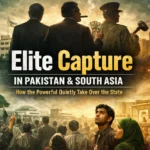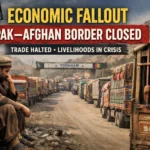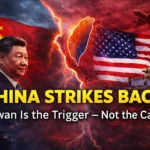August 2025 — Field Marshal Asim Munir’s second visit to the United States in under two months has sparked speculation across diplomatic, military, and business circles. While the official narrative focuses on military diplomacy and diaspora engagement, insiders suggest a much deeper economic and strategic agenda driving this high-profile trip.
1. The Official Cover Story
Publicly, the visit is framed around:
- Attending the CENTCOM Change-of-Command Ceremony in Tampa.
- Meeting U.S. military leadership, including the Chairman of the Joint Chiefs of Staff.
- Inviting U.S. officials to Pakistan for defense cooperation talks.
- Engaging the Pakistani diaspora to promote a positive image and encourage investment.
On the surface, it appears to be a straightforward military and public relations tour — but the underlying objectives suggest otherwise.
2. The Economic Push Behind the Uniform
Despite the military optics, economic diplomacy is at the heart of this visit.
Diaspora-Driven Investment
Munir is targeting Pakistani-American entrepreneurs for investments in:
- IT & Artificial Intelligence
- Renewable Energy
- Agriculture & Food Security
- Mineral Exploration
These sectors can generate quick foreign exchange inflows without the political baggage of IMF programs.
Resource Diplomacy
Pakistan holds gold, copper, lithium, and rare earth mineral reserves — all of which are in demand as the U.S. seeks alternatives to China-dominated supply chains. Munir is quietly offering Pakistan as a reliable sourcing partner without disrupting relations with Beijing.
Dual-Use Technology Cooperation
Discussions may include limited U.S. assistance in:
- Cybersecurity
- Satellite Imagery
- AI & Data Analytics
These areas serve both defense and civilian applications, strengthening Pakistan’s technological base.
3. Regional Diplomacy — A Balancing Act
Munir’s visit sends calculated signals to different capitals:
- Washington: Pakistan remains a key strategic player in South Asia and the Gulf, not to be sidelined by India’s growing U.S. ties.
- Beijing: Pakistan can maintain CPEC and strategic depth while keeping a working channel with the U.S.
- New Delhi: Islamabad’s direct access to top U.S. leadership, including a private lunch with Donald Trump in June, shows its capacity to counterbalance Indian influence.
- Gulf States: Closer U.S.–Pakistan ties indirectly enhance regional security cooperation, already bolstered by Pakistani military deployments in the Middle East.
4. Domestic Optics Power Projection at Home
The visit is also a domestic political signal:
- Foreign Policy Control: Two back-to-back U.S. visits by the Army Chief — without the Prime Minister in the lead — underscore that Pakistan’s external engagement is being driven from GHQ.
- Military Legitimacy: By appearing on the global stage, the army reinforces its role as the most stable and effective national institution during political turbulence.
- Economic Narrative Ownership: Directly leading investment outreach allows the army to claim credit for any upcoming foreign inflows, limiting the civilian government’s ability to take political mileage.
5. What Pakistan Wants from This Visit
- Military Cooperation — Enhanced training opportunities, selective equipment upgrades, and better intelligence-sharing for counter-terrorism.
- Economic Support — Diaspora-led investments, U.S. corporate interest in mining and energy, and possible concessional trade benefits.
- Diplomatic Leverage — Maintain “swing state” status between the U.S. and China, ensuring Pakistan’s relevance in Indo-Pacific and Middle Eastern security
FAQs
Why did Asim Munir visit the U.S. twice in such a short period?
To accelerate defense diplomacy and economic outreach, especially with the Pakistani diaspora and U.S. corporate stakeholders.
Is this visit purely military?
No — the military meetings are the formal cover, but economic and resource diplomacy are key drivers.
How does this visit affect Pakistan–China relations?
Munir is carefully balancing ties, ensuring cooperation with the U.S. without undermining CPEC and Chinese strategic interests.
What could be the biggest outcome of this trip?
If successful, it could lead to increased diaspora investment, new defense cooperation frameworks, and expanded Pakistan–U.S. engagement in tech and minerals.
Conclusion
Field Marshal Munir’s second U.S. visit in quick succession reflects a recalibrated Pakistani foreign policy, where the military plays the lead role in both security and economic diplomacy.
- Military protocol provides the formal reason for travel.
- Economic partnerships are the true target.
- Regional balancing keeps Pakistan relevant to both Washington and Beijing.
- Domestic optics strengthen the military’s image as the country’s primary decision-maker in global affairs.
In essence, this trip is as much about securing Pakistan’s external partnerships as it is about reinforcing internal power structures — a dual strategy that could shape Islamabad’s trajectory for years to come.









